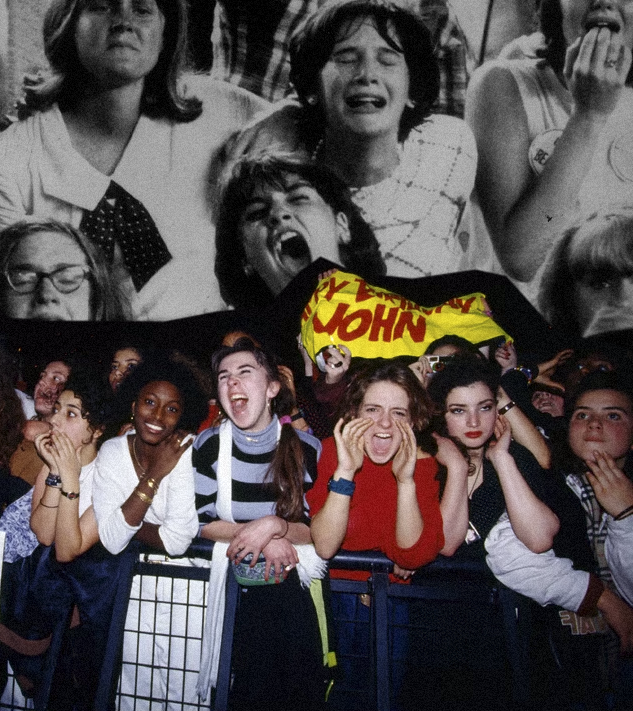“Where Have All the Good Men Gone?” - The Death of the Teen Heartthrob
Make it stand out
When I was growing up, the teen heartthrob was inescapable: Justin Bieber, One Direction, and the Jonas Brothers lived on posters amongst the bedrooms and camp bunks where I spent my youth. These mass-marketed, squeaky-clean guys were each positioned as the perfect starter partner, a fantasy notion that felt much safer than the prospects of real-life dating.
But in recent years, the prevalence of the male teen idol has decreased immensely. Boy bands and film stars that were once swooned over have aged out of their cuteness, yet their replacements, which in the past were practically lined up by conveyor belt, aren’t anywhere to be seen. Do our strapping young men under the age of 25 just not cut it anymore? Or are young women now finding their nascent romantic experiences outside of traditional means?
The lack of teen heartthrobs today is curious, as the past century of pop culture was practically built on their success. In the 1920s, women swooned over the films of young Rudolph Valentino, the first true movie star, and in the 1940s, “Bobby Soxers” revealed a new market for pop music with their affection for crooners like Frank Sinatra, his first hit at age 25. A young Elvis Presley became the de facto sex icon of the 1950s while the 1960s saw masses of screaming fans lining up at the Ed Sullivan Show to see the Beatles, who were all in their early twenties. Film and music were moulded by girlhood desire, leading to the rise of bubblegum pop, the Brat Pack, teen sitcoms, and of course, boy bands.
___STEADY_PAYWALL___
“Film and music were moulded by girlhood desire, leading to the rise of bubblegum pop, the Brat Pack, teen sitcoms, and of course, boy bands.”
In this past era, we got our boy info from teen gossip magazines, which have a storied past of their own. Since the 1940s, these cheap, mass-produced periodicals have lined the grocery store checkout in hopes you could convince your parents to buy you one. Cover designs were plastered with as many celebrity faces as possible, claiming to know about their “secret crushes'' and other juicy, PG-rated content. And although the general trend in media is to eschew print in favor of the web, these once popular female-focused publications are often the first to go. Bop dissolved in 2014, and Tiger Beat in 2018, leaving J-14 the last of the teen gossip titans left. With magazines aimed at teenage girls swiftly put on the chopping block, we see how the interests of young women are not valued seriously in our patriarchal society, and these publications die with hardly an opportunity to update themselves.
J-14’s cover designs today are much simpler than I remember: only four celebrities, typically three women and one man. The men featured? Harry Styles (29), Niall Horan (30), and Louis Tomlinson (31). That’s just One Direction, the exact same people who have graced the covers of J-14 for over a decade. The magazine’s female stars have been updated to today’s tastes: Olivia Rodrigo, Zendaya, Jenna Ortega, Sabrina Carpenter, etc., but Harry’s grinning mug lingers most frequently of all. While I do know a few college students who regularly spend fortunes on Harry Styles tickets, the idea that a magazine aimed at eleven-year-olds is headlined by a guy pushing thirty is shocking.
This focus on older celebrity crushes extends to TikTok, which despite having its own fill of shirt-lifting thirst trap POVs for the young Gen Z and Alpha crowds, lacks stars in their own right. Instead, feeds are populated by fan cams of Cillian Murphy (47), David Harbour (48), and of course, Pedro Pascal (48); over twice the age of many of their fans. While the love for these adult men is completely justifiable for certain crowds, are these really the same figures that tweens should tape to their walls? Or perhaps this group of more mature stars demonstrates the values that young women actually care about; something the industry-mandated heartthrobs lacked amidst their naivety.
I don’t think the market for sanitized manhood is completely lost. The clearest poster-worthy heartthrobs of today come from K-Pop, where young, talented men offer all the typical trappings of an imaginary boyfriend. I am reluctant, however, to hail K-Pop as the definitive answer to my question. Ask K-pop fans which idols they think are dreamy and you’ll receive a thoroughly thought-out list, but ask a teen from outside of the fandom, and they’re practically clueless. When I asked a friend’s fifteen-year-old sister what sort of cute guy bands she liked, the answer was a reluctant “idk, Coldplay?”
Has male distaste towards young women’s interests finally siphoned the heartthrob off into niche genres, where the general public can’t hear them? Or perhaps the teen pop powerhouses like Disney just aren’t able to churn out male stars like they used to, ushering in the end of an era. Now, we see the '90s and 2000s heartthrobs from an adult angle and know these men aren’t as innocent as they once seemed— enter cash-grab *NSYNC reunions and creepy Jo-bro divorces.
Words: Sydney Salk


